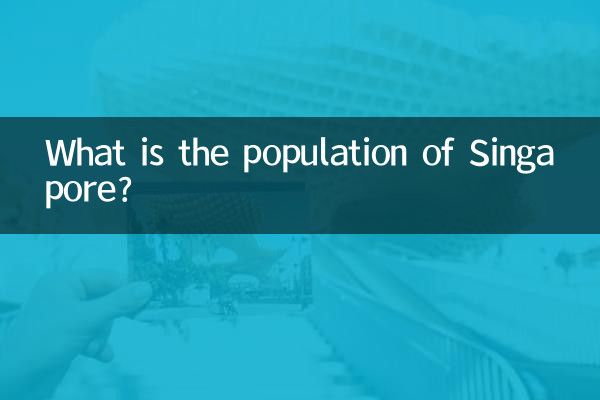What is the population of Singapore?
As a developed city-state in Southeast Asia, Singapore's population data has always been one of the hot spots of international attention. In recent years, Singapore's population growth, immigration policy and demographic changes have become hot topics. This article will combine the hot discussions on the Internet in the past 10 days to give you a detailed introduction to Singapore's population status, and provide structured data for a clearer understanding of this topic.
Singapore Demographic Profile

According to the latest data from the Department of Statistics Singapore, as of 2023, Singapore’s total population will be approximately5.92 million. This number includes citizens, permanent residents and long-term foreigners. Here is a detailed breakdown of Singapore’s population:
| population category | Number of people (10,000) | Proportion |
|---|---|---|
| citizen | 355 | 60% |
| permanent resident | 53 | 9% |
| expat | 184 | 31% |
population growth trends
Singapore's population growth rate has slowed in recent years, mainly due to falling birth rates and tightened immigration policies. The following is Singapore’s population growth data in the past five years:
| Year | Total population (10,000) | growth rate |
|---|---|---|
| 2019 | 570 | 1.1% |
| 2020 | 569 | -0.2% |
| 2021 | 545 | -4.2% |
| 2022 | 563 | 3.3% |
| 2023 | 592 | 5.1% |
As can be seen from the table, Singapore's population has declined significantly in 2021, mainly due to the reduction of foreign labor force caused by the new crown epidemic. In 2023, the population will rebound significantly, which is related to economic recovery and immigration policy adjustments.
Demographic characteristics
Singapore’s population structure is characterized by diversity and aging. The following is data on the age distribution of Singapore’s population:
| age group | Proportion |
|---|---|
| 0-14 years old | 12.5% |
| 15-64 years old | 70.3% |
| 65 years and above | 17.2% |
Singapore's fertility rate has been below the replacement level for a long time (1.04 in 2022), and the aging problem is becoming increasingly prominent. The government has responded to this challenge in recent years by encouraging childbirth and delaying the retirement age.
Foreign population composition
Expatriates in Singapore account for 31% of the total population, mainly from the following areas:
| Origin area | Proportion |
|---|---|
| malaysia | 44% |
| China | 18% |
| India | 16% |
| other countries | 22% |
These foreigners are mainly engaged in construction, manufacturing, service and other industries, and have played an important role in Singapore's economic development.
Population Density and Distribution
Singapore has one of the highest population densities in the world, with an average of more than 8,000 people per square kilometer. However, the population distribution is not even. The following is the distribution of the main regions:
| area | Population (10,000) | Density (people/km²) |
|---|---|---|
| Central District | 98 | 12,500 |
| Eastern District | 120 | 8,200 |
| West District | 150 | 7,800 |
| North District | 110 | 6,500 |
Future population outlook
According to government planning, Singapore's population is expected to reach 6.3-6.7 million by 2030. To achieve this goal, Singapore will continue to adjust its immigration policy while increasing the birth rate by improving the fertility environment. Issues such as population aging, housing pressure and social integration will continue to be hot topics of discussion in the future.
Overall, Singapore's demographic profile reflects the city-state's unique development pattern. As a highly internationalized economy, how to balance population growth and quality of life will be a long-term challenge for Singapore.

check the details

check the details